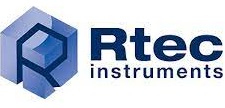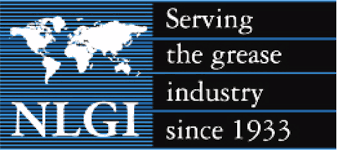Ankit works in the Mechanical Maintenance Division of Hot Strip Mill, Jindal Stainless in India. He has keen interest in HVAC , Hot Rolling Machinery & Equipment, and Industrial Hydraulics.
Lapping
Table of Contents
What is lapping?
Lapping is a type of finishing process which is carried out with the help of loose abrasives. In this finishing process, surface smoothening is achieved by the abrasive grains which are supported by the lap, which functions as a cutting tool shank. Ceramic machining, Brittle material machining, and Glass machining are some of the applications of the lapping process.
The principle of lapping is based on the cutting power of either a free abrasive grain in a carrier or a fixed abrasive particle within a composite lapping plate matrix. The lapping plate on which a slurry medium is applied moves under the workpiece/job surface while the workpiece/job rotates on the lapping plate. The uniform abrasive layer forming between the lapping plate and the workpiece gradually removes material from all the contacting areas simultaneously, putting very little stress into the workpiece. Ultimately when the whole workpiece has been lapped, the shape of the lapping plate is imparted on the workpiece (as in Figure 1). For this reason, flat lapping machines are capable of generating incredibly flat workpieces.
It seems as if the abrasive grains are working in a free movement which is not entirely true. Depending on the lapping process used, the abrasives are either freely rolling or sliding between the workpiece and lapping plate. In diamond lapping, the abrasive particles become fixed within the machined medium. The material removal takes place slowly due to the movement of the lapping plate with respect to the workpiece.

Figure 1: Lapping Operation
Lapping is a process that requires precision, hence it takes quite a bit of time. In order to speed up the process, the two-step operation can be used. The first step is to remove material and create flatness and the second step is to produce a specific surface roughness (Ra value). This is only necessary when our desired Ra is below 0.05µm and we need to remove a lot of material.
With conventional lapping, abrasives such as aluminum oxide or silicon carbide are applied in a carrying medium (e.g Oil) onto a hard-worked surface (e.g. cast iron). The particles can’t be pressed into the surface and remain secured there, so they roll and displace freely in all directions. They hammer small particles out of the workpiece, imparting deep deformations. This phenomenon takes place as the free-moving abrasive particles are not able to produce a real scratch on the component surface. Instead, it hammers out small pockets.
Typically the lapping process is used to:
- Produce a fine surface finish
- Produce sealing surfaces
- Produce sharp cutting edges
- Produce flat stress-free surfaces
- Produce a datum face
- Improve the wear-resistant properties of surfaces
In general, the abrasives used are in suspension (slurry medium) and applied to the platen during the process or are embedded in a film that is adhered to the platen. There is a wide variety of abrasives when selecting a lapping or polishing process. Selecting an abrasive is dependent upon the job hardness, targeted surface finish, desired removal rate, lifetime, and price. There are four types of abrasives that are used in this process:
SiC: It is hard and has a needle or blocky-like structure. It is used in applications where rough lapping is required. It is used for applications that require smooth surface finishes.
Al2O3: Alumina is generally used where fine surface finishes are required since it breaks down over time & gives excellent surfaces during lapping. It is relatively inexpensive than other abrasives.
B4C: It is harder than most other abrasives (excluding diamond) and has a blocky crystal structure. It provides excellent removal rates and is typically used when fast removal with moderate surface quality is needed.
Diamond: It is the hardest material known and has a sharp, angular-like structure. It has high removal rates and surface finishing properties. It has the ability to produce excellent surface finishes combined with high removal rates.

The incredible video below demonstrates a few lapping methods and the kinds of geometry the lapping produces:
Types of Lapping
According to the rubbing action, the lapping process can be divided into two types:
- Hand Lapping: In this process, the workpiece is rubbed over the lapping plate manually. First, the plate is coated with the abrasive material which is in the form of paste. Now, the workpiece is rubbed over the plate by applying a small pressure manually.
- Machine Lapping: It is used for finishing large quantities of similar parts. This machine involves a rotating lapping plate and conditional rings. The conditional rings provide sits for the workpiece. This ring rotates and rubs the workpiece against the lapping plate.
Lapping plates or working plates grades can be separated into 4 categories:
- Soft working plates:- For e.g.: paper, cloth, plastic, wood, tin, aluminum alloy, copper, etc.
- Hard-working plates:- For e.g.: cast iron, mild steel, soft ceramic, etc
- Hardened working plates:- For e.g.: hardened cast iron, hardened steel, hard ceramic, etc., up to 500 HB
- Multi-metal plates:- For e.g.: sintered metal powder or a combination of 2-3 different metals.
Advantages of lapping:
- The dimensions are accurate
- It corrects minor imperfections in shape.
- Excellent refinement of surface finish.
- It produces a close fit between the mating surfaces
- It doesn’t require the use of holding devices; therefore, no workpiece distortion occurs.
- Generally, less heat is generated in lapping than in most of the other finishing operations. This minimizes the possibility of metallurgical changes occurring in machined parts.
- When both sides of a flat workpiece are in lapping simultaneously: extreme accuracy in flatness and parallelism. Also, the relief of inherent stresses can be achieved.
Disadvantages or limitations of lapping:
- It is a slow & gradual process
- The process seems simple but it is an expensive process
References
- https://www.kemet.co.uk/blog/lapping/what-is-lapping
- https://www.stahliusa.com/stahli-publication/the-technique-of-lapping/the-lapping-process/
- https://lnf-wiki.eecs.umich.edu/wiki/Lapping
- HUNSAKER, J. Friction and Surface Finish. Nature 146, 138–139 (1940). https://doi.org/10.1038/146138a0






